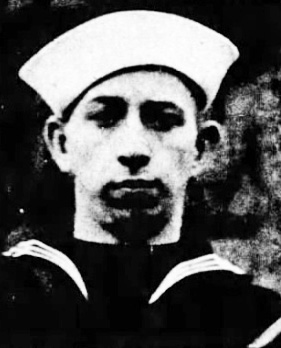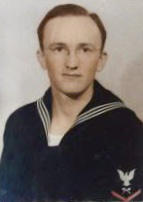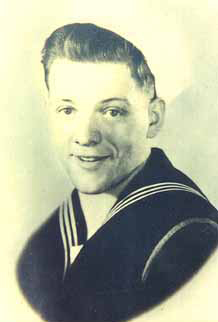Fallen Iowa Pearl Harbor sailors coming home
Posted
by Pat Kinney
on Thursday, December 6, 2018

One by one, a group of Iowa sailors are returning home – after more than 75 years.
They are the sailors who perished on the battleship USS Oklahoma at Pearl Harbor.
Their remains are being identified and returned to their families and local communities, in a painstaking process conducted by a nonprofit organization and an agency of the U.S. Department of Defense.
The remains of three Iowa sailors who died on the ship have been returned to Iowa and laid to rest in the past three months. (pictured left to right) They included Robert J. Bennett (HonorStates.org), who was age 18 when he was killed, of Monona in September; William L. Kvidera (Defense POW/MIA Accounting Agency), 22, of Traer, laid to rest there Nov. 16; and Bert E. McKeeman (Defense POW/MIA Accounting Agency), 25, of Council Bluffs, laid to rest Dec. 1.



Two years ago, the remains of the ship’s chaplain, the Rev. Aloysius Schmitt, pictured below, (The Witness/Archdiocese of Dubuque), 32, a Roman Catholic priest from the town of St. Lucas in Fayette County, were returned to Iowa for service at St. Lucas and at Loras College in Dubuque. He was awarded the Silver Star posthumously for saving the lives of more than a dozen of his shipmates, directing and helping them through a porthole as the ship capsized. He was the first American chaplain to die in World War II.
.jpg)
In all, 429 of the USS Oklahoma’s crew of 2,166 died when the ship was hit by nine torpedoes from Japanese planes and capsized in the Dec. 7, 1941 attack on Pearl Harbor. The Oklahoma was one of the first ships hit in the attack and sustained the second-highest loss of life. It was only surpassed by the 1,177 sailors who died aboard the USS Arizona. A total of 2,403 people were killed in the attack on Pearl Harbor and another 1,143 wounded, according to the Pearl Harbor visitors bureau website.
The Arizona’s sunken hulk still sits at the harbor bottom -- a final resting place of more than 1,100 of its crew. A memorial was erected over it in 1962 to all its dead and others who died in the attack that plunged the United States into World War II.
Unlike the Arizona, the Oklahoma was eventually salvaged and turned upright but deemed no longer battleworthy. It was sold for scrap but sunk in a storm while being towed back to the West Coast from Hawaii.
Initially the remains of only 35 of the 429 who died could be identified through methods available at that time. The remains of the rest eventually were buried in several mass graves as “unknowns” in the National Cemetery of the Pacific in the Punchbowl crater in Hawaii and a memorial to the crew opened on Ford Island in the harbor in 2007.
With the advent of modern DNA testing, a few additional sailors’ remains were exhumed and identified in the early 2000s. In 2015 the Defense Department announced the Oklahoma sailors’ remains would be disinterred for identification through DNA analysis. Through the middle of this year about 130 sets of remains of the 429 who died had been identified. Of the 26 Iowa crew members who died on the Oklahoma, seven have been accounted for so far.
The nonprofit, Cortland, Ohio-based USS Oklahoma Remains Preservation Project is working with the Defense POW-MIA Accounting Agency to identify and return remains. The Preservation Project has a Facebook page and is accepting donations to raise awareness and to cover expenses associated with its effort. Donations may be made at https://www.ussoklahomadonate.org/
The Defense POW-MIA Accounting Agency is working to locate and identify more than 82,000 missing from World War II; nearly 7,700 from the Korean War and nearly 1,600 from the Vietnam War. More agency information is available at www.dpaa.mil and on its Facebook page.